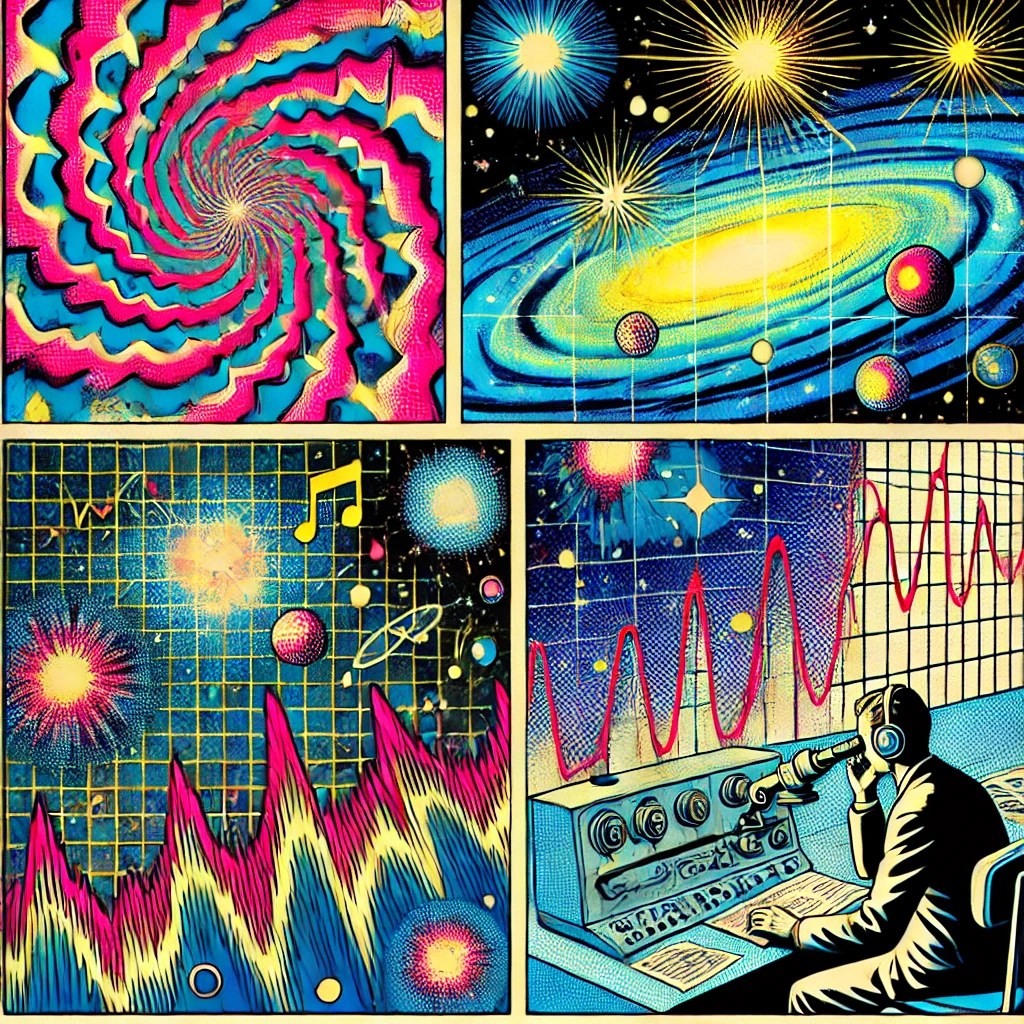The Sounds of the Universe Professor Carolin Crawford
In space no-one can hear you scream… but it is still a noisy Universe. We are familiar with the many stunning images of space, but these are only part of the whole human experience. This lecture takes a new approach to appreciating the Universe, through the vehicle of sound. Once we understand how sound is propagated, we can look at the how and where it can exist in space. We examine how sound can be a diagnostic of cosmic phenomena (such as the song of the Sun and distant stars), the way it can carry energy across vast volumes of space (away from a black hole humming in BM)), how it can be a useful way to illustrate processes in astronomy (such as the rapid spin of pulsars, and other more local radio emissions) and how it is ultimately responsible for the growth of all structure we see today in the cosmos.
The transcript and downloadable versions of the lecture are available from the Gresham College website: http://www.gresham.ac.uk/lectures-and-eve nts/the-sounds-of-the-universe
Professor Carolin Crawford is a prominent astrophysicist known for her research on the universe and her engaging public lectures on astronomy. While I couldn’t find specific information about a lecture titled “The Sounds of the Universe” by Professor Carolin Crawford, it’s highly plausible that such a topic would fit well within her expertise.
In astronomy and astrophysics, the concept of “sounds of the universe” typically refers to the conversion of astronomical data into audio representations. This is often done to make complex astronomical phenomena more accessible to the public and to provide a new perspective on the cosmos.
Some examples of the sounds of the universe include:
1. Radio Waves from Celestial Objects: Radio telescopes pick up radio waves emitted by celestial objects such as stars, galaxies, and pulsars. These radio signals can be converted into sound waves, allowing us to “listen” to the cosmos.
2. Pulsar Signals: Pulsars are rapidly rotating neutron stars that emit beams of radiation. When these beams sweep past the Earth, they produce regular pulses of radiation that can be detected by radio telescopes. The pulses can be converted into audio signals, creating a rhythmic “pulsar sound.”
3. Solar Wind: The solar wind, a stream of charged particles flowing from the Sun, interacts with the magnetic fields of planets and other celestial bodies. This interaction produces electromagnetic waves that can be converted into sound waves, giving us a “sonification” of the solar wind.
4. Cosmic Microwave Background Radiation: The cosmic microwave background (CMB) radiation is the faint glow of radiation left over from the Big Bang. While it is not directly audible, scientists have created simulations and sonifications of the CMB, providing a way to “hear” the echo of the early universe.
Professor Crawford, with her expertise in astronomy and science communication, would likely be able to provide fascinating insights into these topics and more in a lecture titled “The Sounds of the Universe.” She often uses multimedia presentations, including visuals and audio, to engage audiences and explain complex astronomical concepts in an accessible way. If you have the opportunity to attend one of her lectures or events, it would likely be a captivating and educational experience.
